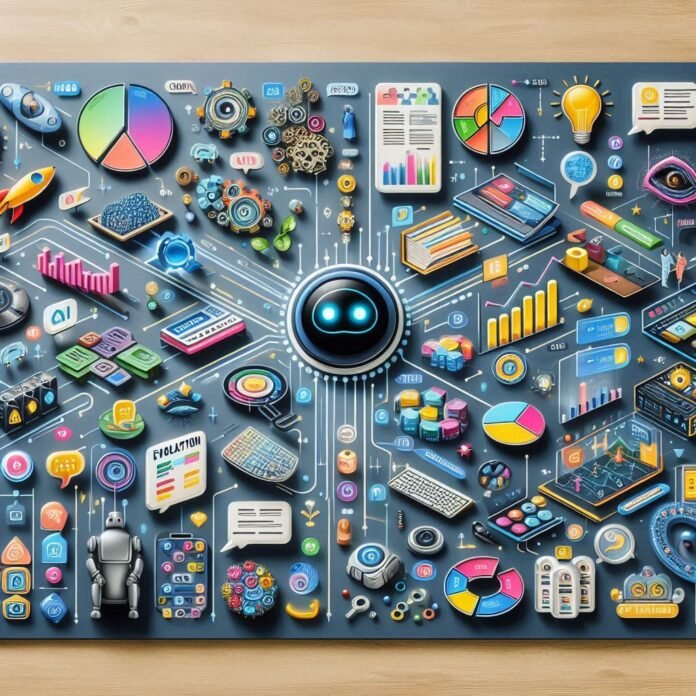The Journey of Development
The development of ChatGPT represents a significant milestone in the field of artificial intelligence, particularly in natural language processing (NLP). This journey began with the inception of the Generative Pre-trained Transformer model, introduced by OpenAI. The first version, known as GPT, was released in 2018 and laid the groundwork for future iterations. The breakthrough came from utilizing a transformer architecture, which facilitated the understanding and generation of human-like text.
As the development progressed, subsequent versions followed, including GPT-2 and GPT-3. Each iteration saw improvements in performance, driven by larger datasets and enhanced algorithms. A crucial aspect of this evolution was the vast array of text data sourced from books, articles, websites, and other written materials, which enabled the model to learn diverse language patterns and contexts. This extensive training corpus not only improved ChatGPT’s fluency but also broadened its ability to engage with users on various topics.
Advancements in NLP techniques further enriched ChatGPT’s capabilities. Innovations like fine-tuning and reinforcement learning from human feedback (RLHF) helped refine the model’s responses, allowing it to generate more relevant and contextually appropriate replies. The iterative changes made during the training process, including adjustments based on user interactions and feedback, significantly enhanced its ability to maintain coherent and context-aware conversations.
Moreover, the understanding of ethical considerations in AI has evolved concurrently with technical development. OpenAI has committed to addressing the risks associated with deploying such powerful models, ensuring safety measures are in place to mitigate harmful outputs. This ongoing commitment has not only strengthened user trust but has also contributed to the responsible deployment of ChatGPT in various applications, from customer support to personal assistance.
Real-World Applications
ChatGPT, a leading conversational AI model, has found its applications in various industries, showcasing its versatility and effectiveness in addressing real-world problems. In healthcare, for instance, ChatGPT assists in symptom checking and patient engagement. By analyzing patient inputs, it provides preliminary assessments and health information, which can guide users towards the next steps in their medical journey. This application not only enhances the patient experience but also alleviates some logistical burdens from healthcare professionals, enabling them to focus on more critical tasks.
In the realm of marketing, companies leverage ChatGPT to drive customer engagement through personalized communication. Businesses utilize this AI to craft tailored marketing messages, respond to inquiries in real-time, and even generate content for campaigns. By analyzing user behavior and preferences, ChatGPT can create targeted ad copies that resonate with specific audiences, thereby optimizing conversion rates and enhancing brand loyalty.
Furthermore, the technology has made a significant impact in tech support. Many organizations have integrated ChatGPT into their customer service platforms to form intelligent chatbots capable of addressing common technical issues. These AIs can provide instant responses to customer queries, troubleshoot problems, and escalate complex issues to human agents when necessary. This seamless interplay between AI and human support not only minimizes wait times for customers but also streamlines operations for businesses.
Overall, ChatGPT’s influence spans across sectors, continually evolving to meet specific needs. By implementing this advanced conversational AI, industries can significantly improve efficiencies and develop more meaningful interactions with users. The ever-expanding capabilities of ChatGPT demonstrate a promising future in its application across various domains, enhancing user experiences in everyday scenarios.
Challenges and Future Prospects
ChatGPT and similar conversational AI models have made significant strides in recent years; however, they face several challenges that require ongoing attention and innovative solutions. One pressing concern is the presence of biases embedded within these AI systems. Since ChatGPT learns from vast datasets that reflect human language and culture, it inadvertently inherits the biases found within that data. This can result in skewed or insensitive responses, leading to ethical issues that need to be addressed to ensure equitable and respectful interactions with users.
Another major challenge lies in the misinterpretation of user input. As conversational AI becomes more integrated into everyday life, the expectation for accurate and contextually aware responses increases. Misunderstandings can arise from ambiguous language or cultural nuances, which can contribute to user frustration or misinformation. Therefore, enhancing the interpretive abilities of AI models is critical for improving user satisfaction and ensuring reliable communication.
In response to these challenges, ongoing research efforts are focused on enhancing AI safety and reliability. Developers are exploring methodologies to diminish biases through diversified training datasets, as well as implementing reinforcement learning from human feedback. These strategies aim to improve the ethical performance of AI models like ChatGPT, fostering responsible and trustworthy interactions.
Looking towards the future, the evolution of ChatGPT promises advancements in conversational AI capabilities. One of the anticipated developments is an increase in contextual awareness, allowing models to retain information across interactions and provide more personalized responses. Furthermore, with greater transparency in AI decision-making processes, users may gain a better understanding of how these systems generate responses. As the field progresses, it is essential to balance innovation with ethical considerations, ensuring that the evolution of conversational AI remains beneficial and inclusive.

